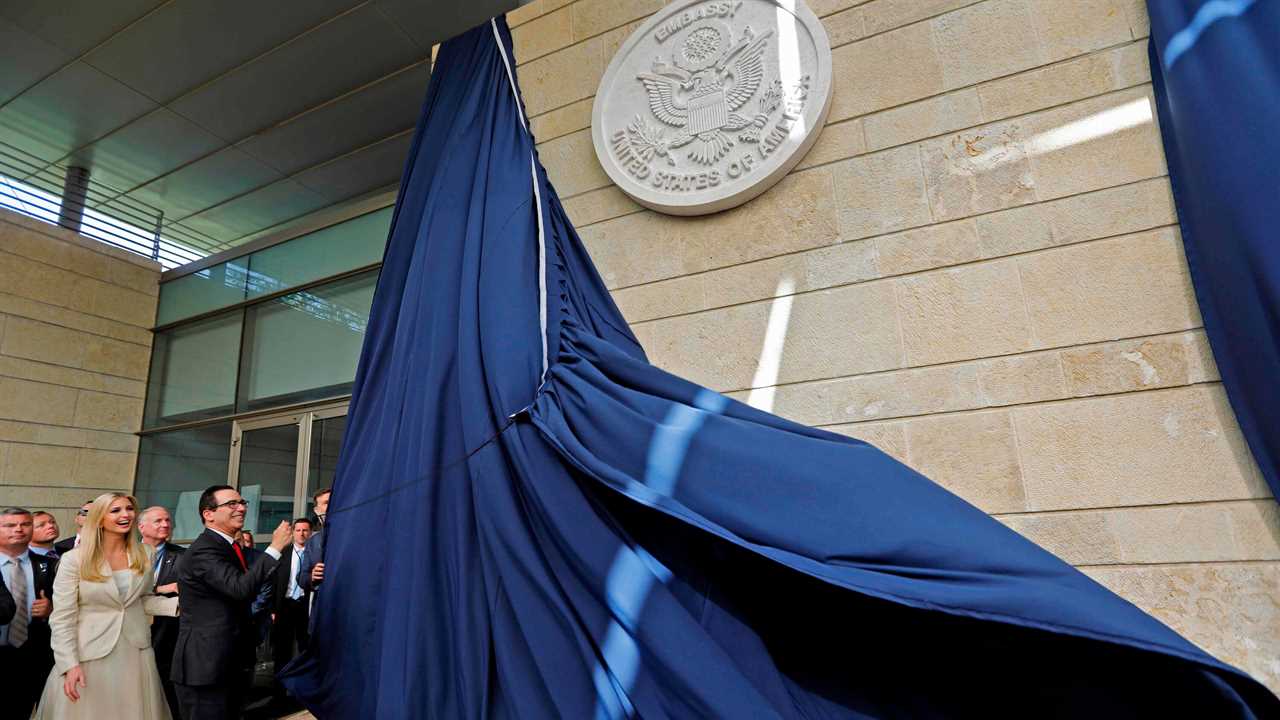
WASHINGTON — The official residences of U.S. ambassadors overseas are almost always prime pieces of real estate: stately mansions in desirable neighborhoods where American diplomats entertain dignitaries, hold high-level meetings and occasionally host presidents.
In Israel, for more than half a century, the top U.S. envoy lived just outside Tel Aviv in a luxurious five-bedroom estate with sweeping views of the Mediterranean Sea. Israel gave the land to the United States in the 1950s.
Yet President Donald J. Trump sold the property when he moved the U.S. Embassy to Jerusalem from Tel Aviv in 2018. And that has left the newest American ambassador to Israel, Thomas R. Nides, to resort to the rental market for a place to live.
Mr. Nides, who arrived in Israel on Monday, has said he will live in Jerusalem to be near the embassy. More than half of the embassy’s staff members, however, still live in Tel Aviv, hampered by Jerusalem’s skyrocketing housing prices and security precautions required for American officials living there. That arrangement will require Mr. Nides to make the hourlong drive several times each week to meet with his own diplomats.
Officials said Mr. Nides was happy to live in Jerusalem. But more than a lost perk, the former ambassador’s residence in the exclusive Tel Aviv suburb of Herzliya Pituach has become a symbol of the logistical headaches that American diplomats in Israel have dealt with since the U.S. Embassy was moved.
Frustration over the sale of the residence surfaced anew among American diplomats this week as Mr. Nides, a career banker who was the State Department’s deputy secretary for management and resources during the Obama administration, took up his new post. Two State Department officials described the situation on the condition of anonymity because they were not authorized to discuss it publicly. A spokeswoman for the department declined to comment.
In late 2017, Mr. Trump reversed seven decades of U.S. policy by formally recognizing Jerusalem as Israel’s capital in a dramatic response to demands for enduring American support for the Jewish state. At the time, he also ordered the embassy to relocate to Jerusalem.
That happened a few months later, when the embassy was moved into a building that had housed the U.S. Consulate in Jerusalem and had served as the primary diplomatic way station for Palestinians in the West Bank and Gaza. In 2019, the consulate was folded into the embassy, effectively downgrading American representation to the Palestinians.
Since taking office this year, President Biden has sought to restore relations with the Palestinians but has kept the U.S. Embassy in Jerusalem.
David Makovsky, a fellow at the Washington Institute for Near East Policy, said a senior Trump administration official told him in 2020 that the administration had sold the ambassador’s residence to help ensure that a Democratic president would not try to move the embassy back to Tel Aviv.
“Burn the lifeboats,” Mr. Makovsky said the official told him wryly.
“The old residence was on a cliff overlooking the Mediterranean, it had a big swimming pool and a lush, big garden where you could fit 2,000 Israelis on July 4,” said Mr. Makovsky, a former senior adviser to the special envoy for Israeli-Palestinian negotiations from 2013 to 2014. “Now you’re in a situation where there’s no natural residence for the ambassador.”
In July 2020, the residence in Herzliya was sold for about $67 million to Sheldon Adelson, a Republican megadonor who had pushed Mr. Trump to move the embassy to Jerusalem. Mr. Adelson died in January, and his family has kept the house in Herzliya for personal use, according to a person familiar with the situation who spoke on the condition of anonymity.
Mr. Nides’s immediate predecessor, David M. Friedman, lived in the official residence for some time after Mr. Adelson bought it, said the person familiar with the situation, although it was not clear if he paid rent. Mr. Friedman and his former aides did not respond to requests for comment, and the Adelson family declined to comment through a spokesman.
One official said Mr. Friedman at times also stayed in an apartment in the embassy’s compound in Jerusalem, where the diplomatic mission’s low-key chargé d’affaires, Michael Ratney, had lived this year while bridging the gap between the two ambassadors.
But the pied-à-terre at the embassy provides little privacy and has none of the grandeur for the formal events that an American ambassador posted to the United States’ closest Middle East ally is expected to host.
For months, State Department officials have been house hunting in Jerusalem for a new ambassadorial residence, but the process of buying property and outfitting it with security measures and other sensitive gear will most likely take time. Building a new embassy could take up to a decade, officials said.
In the meantime, the department has rented a more modest apartment in Jerusalem for Mr. Nides. It is not clear how much the lease will cost American taxpayers, and the State Department would not provide an estimate on Wednesday.
However diplomatically discomfiting, there is precedent for an ambassador without an official residence.
In a twist, the new Israeli ambassador to the United States, Michael Herzog, also needed to find a new place to live when he arrived in Washington in mid-November. The official residence for the Israeli ambassador was torn down in recent years after falling into disrepair, and the past two ambassadors lived in a rental home in suburban Maryland at a reported cost of nearly $2 million since 2013 before the lease expired this fall.
The Israeli government has said it will rebuild its ambassador’s residence, which is in Washington’s leafy Forest Hills neighborhood and is a short distance from its embassy, within a year. For now, officials said, Mr. Herzog is living in a hotel until he can find his own rental.
Did you miss our previous article...
https://trendinginthenews.com/usa-politics/us-reports-its-1st-omicron-case-in-a-california-traveler






